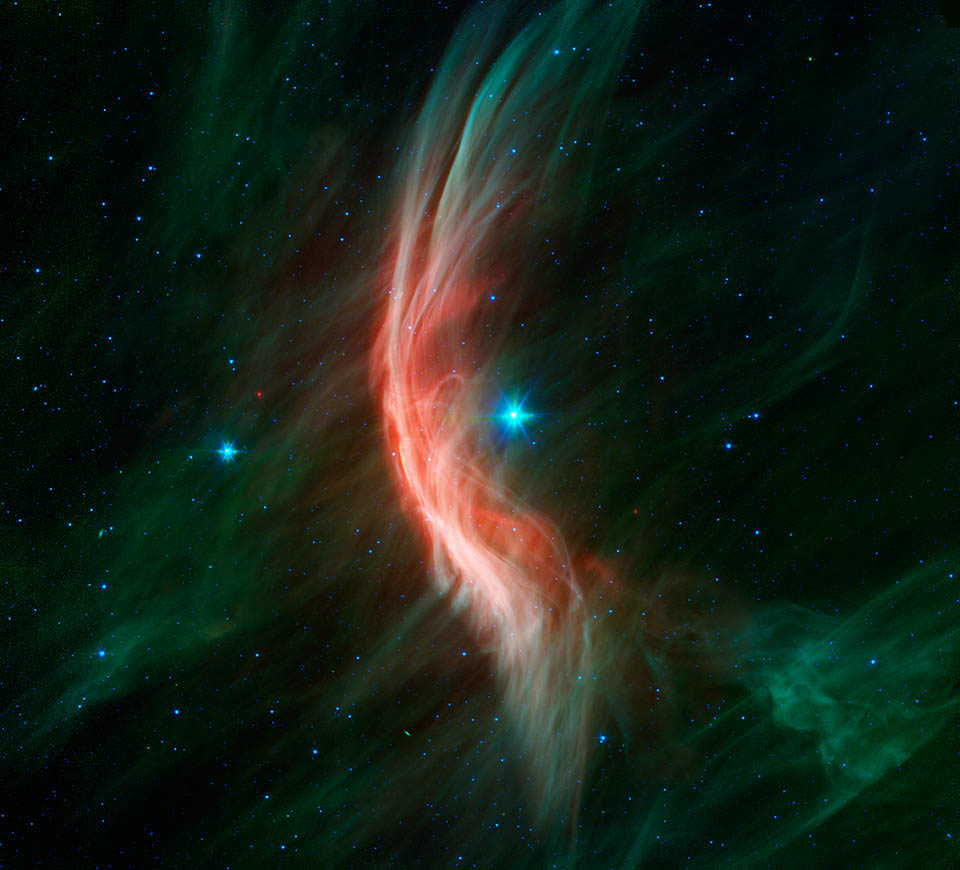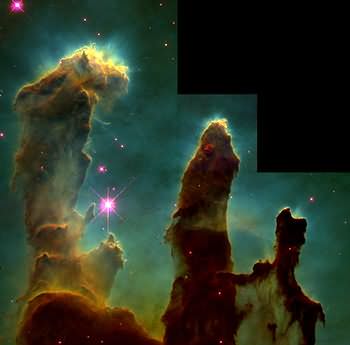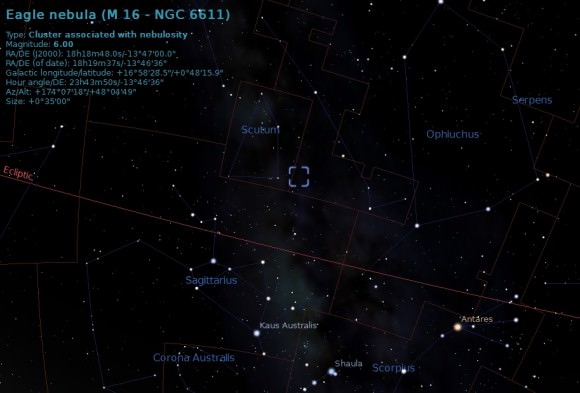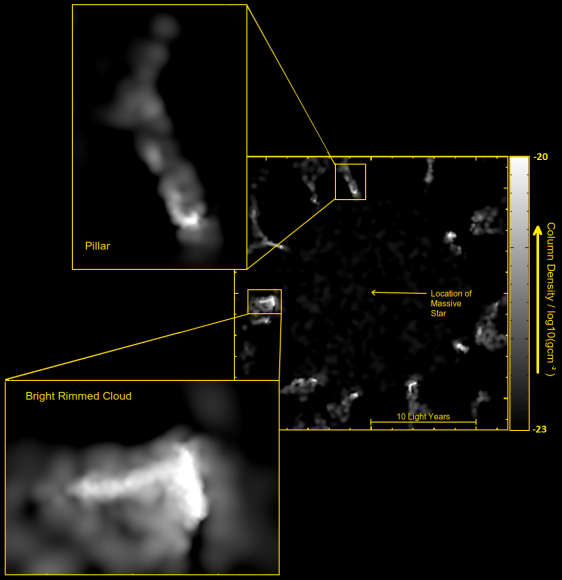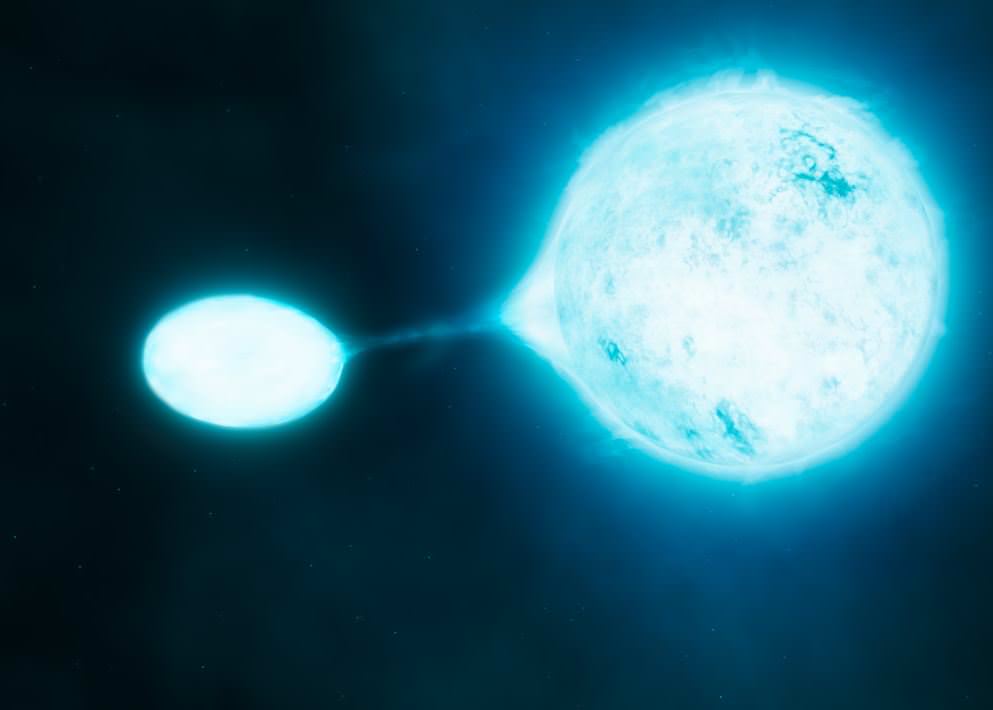Caption: New research using data from European Southern Observatory telescopes, including the Very Large Telescope, has revealed that the hottest and brightest stars, known as O stars, are often found in close pairs. Credit: ESA, NASA, H. Sana (Amsterdam University), and S.E. de Mink (STScI)
Like humans, stars seem to prefer the company of companions. A new study using the Very Large Telescope reveals that most very bright, high-mass O-type stars do not live alone. Surprisingly, almost three-quarters of these stars have a close companion star, far more than previously thought. But sometimes – also like humans – the relationship between companion stars can turn a little ugly, with one star becoming dominant and even disruptive by stealing matter from the other, or doing a hostile takeover.
An international team of astronomers have found that some stars will virtually suck the life out of another, and about one-third of the time, a pair of stars will ultimately merge to form a single star.
The stars included in this study are some of the biggest, brightest stars which have very high temperatures. They live fast and die young, and in their lives play a key role in the evolution of galaxies. by, which drive the evolution of galaxies. They are also linked to extreme phenomena such as gamma-ray bursts.
“These stars are absolute behemoths,” said Hugues Sana, from the University of Amsterdam, The Netherlands, lead author of the study. “They have 15 or more times the mass of our Sun and can be up to a million times brighter. These stars are so hot that they shine with a brilliant blue-white light and have surface temperatures over 54,000 degrees Fahrenheit (30,000 degrees C).”
The astronomers studied a sample of 71 O-type single stars and stars in pairs (binaries) in six nearby young star clusters in the Milky Way.
By analyzing the light coming from these targets in greater detail than before, the team discovered that 75 percent of all O-type stars exist inside binary systems, a higher proportion than previously thought, and the first precise determination of this number. More importantly, though, they found that the proportion of these pairs that are close enough to interact (through stellar mergers or transfer of mass by so-called vampire stars) is far higher than anyone had thought, which has profound implications for our understanding of galaxy evolution.
O-type stars make up just a fraction of a percent of the stars in the universe, but the violent phenomena associated with them mean they have a disproportionate effect on their surroundings. The winds and shocks coming from these stars can both trigger and stop star formation, their radiation powers the glow of bright nebulae, their supernovae enrich galaxies with the heavy elements crucial for life, and they are associated with gamma-ray bursts, which are among the most energetic phenomena in the universe. O-type stars are therefore implicated in many of the mechanisms that drive the evolution of galaxies.
“The life of a star is greatly affected if it exists alongside another star,” said Selma de Mink of the Space Telescope Science Institute, in Baltimore, Md., a co-author of the study. “If two stars orbit very close to each other they may eventually merge. But even if they don’t, one star will often pull matter off the surface of its neighbor.”
Mergers between stars, which the team estimates will be the ultimate fate of around 20 to 30 percent of O-type stars, are violent events. But even the comparatively gentle scenario of vampire stars, which accounts for a further 40 to 50 percent of cases, has profound effects on how these stars evolve.
Until now, astronomers mostly considered that closely orbiting massive binary stars were the exception, something that was only needed to explain exotic phenomena such as X-ray binaries, double pulsars, and black hole binaries. The new study shows that to properly interpret the universe, this simplification cannot be made: these heavyweight double stars are not just common, their lives are fundamentally different from those of single stars.
Loading player…
For instance, in the case of vampire stars — where the smaller, lower-mass star is rejuvenated as it sucks the fresh hydrogen from its companion — its mass will increase substantially and it will outlive its companion, surviving much longer than a single star of the same mass. The victim star, meanwhile, is stripped of its envelope before it has a chance to become a luminous red supergiant. Instead, its hot, blue core is exposed. As a result, the stellar population of a distant galaxy may appear to be much younger than it really is: both the rejuvenated vampire stars, and the diminished victim stars become hotter, and bluer in color, mimicking the appearance of younger stars. Knowing the true proportion of interacting high-mass binary stars is therefore crucial to correctly characterize these faraway galaxies.
“The only information astronomers have on distant galaxies is from the light that reaches our telescopes. Without making assumptions about what is responsible for this light we cannot draw conclusions about the galaxy, such as how massive or how young it is. This study shows that the frequent assumption that most stars are single can lead to the wrong conclusions,” said Sana.
Understanding how big these effects are, and how much this new perspective will change our view of galactic evolution, will need further work. Modeling binary stars is complicated, so it will take time before all these considerations are included in models of galaxy formation.
The paper was published in the July 27 issue of the journal Science.
Paper by: Sana, de Mink, et al. (PDF document)
Sources: ESO, HubbleSite
